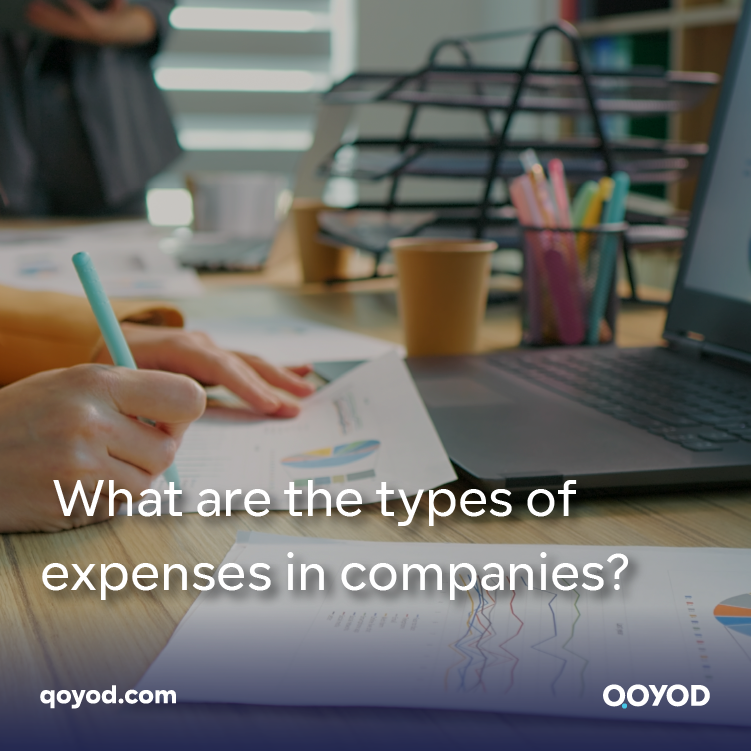Companies always aim to achieve high-profit levels, and to do so effectively, they must control their expenses efficiently and work to reduce them.
Expenses reflect all the costs involved in the revenue-generation process.
It represents the cost of depreciated assets or services used in the process.
A company’s expenses usually adversely affect the outcome of its business; increasing expenses leads to a decrease in profits and a reduction in capital investment.
If the company’s expenses are greater than its revenues, there is no doubt that this will cause a financial loss to the company.
If the company’s expenses are lower than the value of its revenue, it will make a profit.
In this article, we will talk about the types of expenses in companies.
We will explain the difference between prepaid expenses and accrued expenses, so follow along with us in the next line of this article.
Expenses as an accounting term
The expenses are cash outflows from the company, which are intended to operate and invest in it for the purpose of obtaining a product or service or to complete a process aimed at obtaining a product or service.
The expenses include payments to suppliers, salaries, and wages of employees and workers, rental costs, and depreciation of assets, machinery, and equipment.
2: What are the types of expenses in companies?
The expenses are classified in the accounting into three categories:
1. Revenue expenditures
These are expenses related to the functions of the company and are spent periodically. The aim is to obtain immediate services.
These expenses have several subtypes that vary depending on the business activity, including:
- Public expenses: Types of public expenses include employees’ wages, taxes, water and electricity bills, etc.
Administrative expenses: Directors ‘ fees, management awards, and stationery expenses are some of the types of administrative expenses.
- Marketing and sales expenses: These include sales exhibition expenses, salesmen’s commissions, and sales staff fees.
- Financial and financing expenses: such as letter of guarantee commission, checkbook price, collection commission, and account opening expenses
- Operating expenses: These are the expenses that companies spend on operations, such as the costs of manufacturing materials and the salaries of production line employees.
2. Capital Expenditures
It is defined as the expenses paid by the company in order to increase the production capacity of fixed assets in the company or in order to purchase fixed assets.
Types of capital expenditure include:
- Improvement expenses: These are expenses that aim to increase the value of the company’s assets in order to increase the production rate and reduce its costs, such as replacing part of the machinery or equipment with others.
- Incremental expenses: expenses resulting from new investment in capital through the expansion of the purchase of firm assets
- Replacement expenses: expenses incurred for the replacement of another asset
3. Deferred Expenses
They are called deferred income expenditures, which are incurred for short-term services and are designated for use in the foreseeable future.
The volume of this type of expenditure is usually greater than that of normal income expenditures.
Control your facility’s expenses with the Qoyod program. Try it now for free for 14 days.
The difference between prepaid expenses and accrued expenses
According to the accrual principle in accounting science, which provides for the recording of all revenues and expenses related to the fiscal year, regardless of the collection of revenues or the payment of expenses, the types of expenses in companies are divided into prepaid expenses and accrued expenses:
1. Prepaid expenses
They are debit expenses, paid in the current accounting period.
In exchange for the use of these expenses in future periods, such as rents, insurance premiums, and advertising costs.
Thus, this accounting period appears to be in the event of a loss due to the fact that expenses were incurred without the equivalent.
2. Accrued Expenses
These expenses were not paid by the company, so they become deferred expenses for a subsequent accounting period, with the entity enjoying these expenses in return, and therefore this accounting period appears to be in a state of profit due to free-of-charge utilization.
What are the items of expense?
The majority of companies agree on several items that form the nucleus of the types of expenses in companies, such as wages, rents, advertising, and benefits, in addition to production costs, marketing, and administrative expenses.
What is the difference between revenue and expenses?
Revenues represent all benefits, whether financial or non-financial, obtained by the enterprise in exchange for the sale of goods and products or the provision of services.
The expenses include all amounts abandoned by the enterprise in order to obtain revenue.
Organizations usually balance both income and expenditure with a view to determining the extent to which they have made a profit or loss during the accounting period that has ended.
When it makes this budget, the result is either a profit, that is, the company’s revenues are greater than its expenses, or a loss, which occurs when the company’s expenses exceed the revenues it has achieved.
When the income and expense items constituting the profits and losses resulting from ordinary activities are of size, nature, or have a significant impact on the performance of the company, then they must be disclosed to explain the Company’s performance for this accounting period.
The nature and value of such clauses must also be stated separately.
This information is included in the income statement or in the notes that supplement the financial statements.
Conclusion
The types of expenses in companies are numerous and are one of the aspects associated with profits.
They are indispensable and therefore await profit on their own.
The management of enterprises or companies therefore requires covering certain expenses to obtain a return and then making profits.
The objective of these companies is to ensure that their expenditures do not exceed the revenues they generate.
In concluding our talk about the types of expenses in industrial and commercial companies, we invite you to collect the greatest possible benefit by visiting the Qoyod platform, through which we offer you everything that is useful in this regard.
So, try Qoyod now for free for 14 days, as it is a cloud program that provides you with various packages to suit all your projects.




